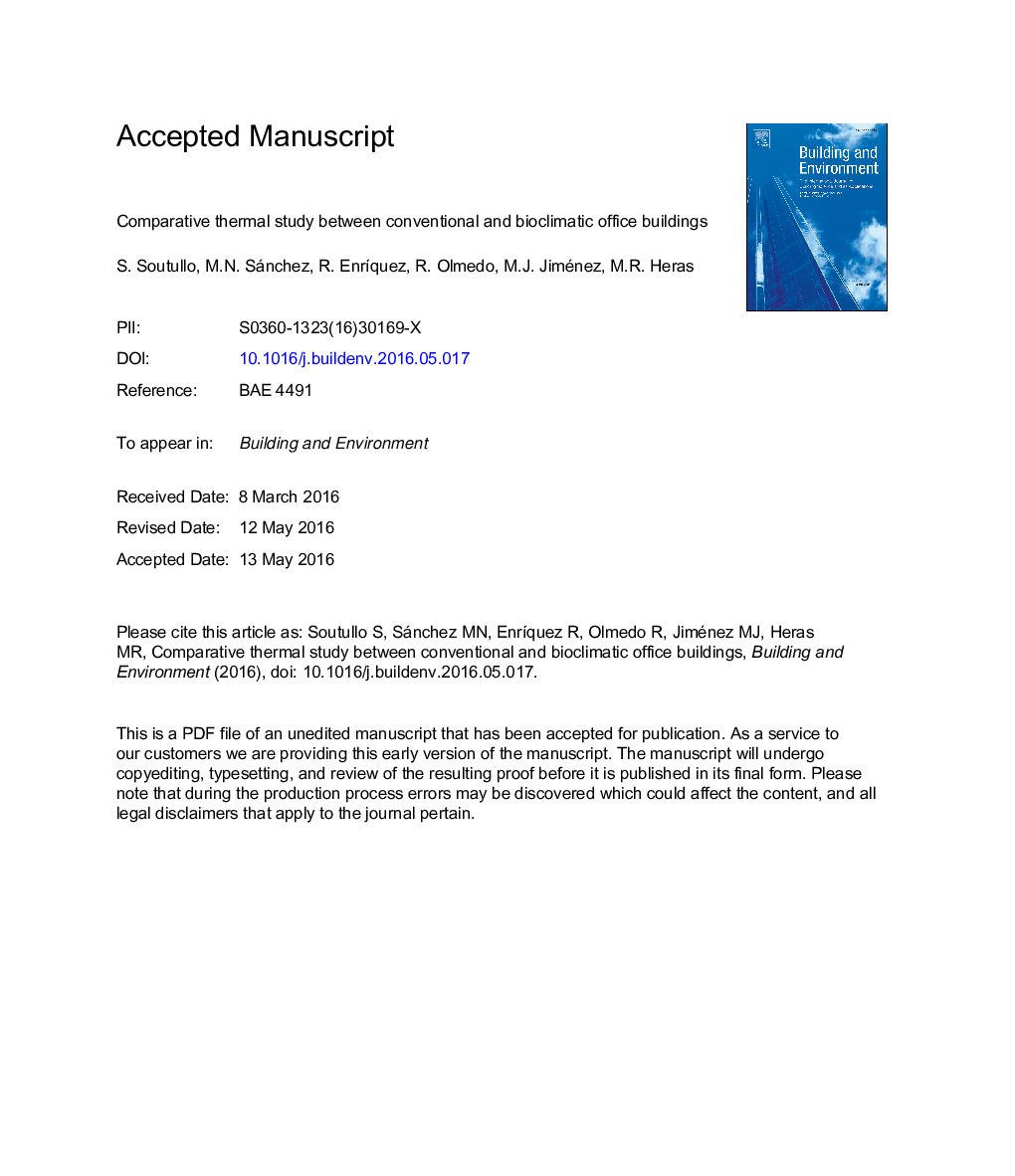| Article ID | Journal | Published Year | Pages | File Type |
|---|---|---|---|---|
| 6698949 | Building and Environment | 2016 | 32 Pages |
Abstract
The presented research focuses on the comparison of energy performance of a conventional versus a bioclimatic building, both continuously monitored. Attached buildings of offices located in Madrid, with main orientation N-S, have been built considering different constructive criteria. Principal Components Analysis has been used to check the representativeness criteria of the analysed offices. The Box and Whisker method concluded that the bioclimatic building has registered lower inter-quartile ranges for indoor temperatures than the convectional building. Thermal oscillations have been calculated for both buildings during winter and summer campaigns. The behaviour of the bioclimatic building is close to the summer thermal comfort band however during winter period values are slightly above because upper temperature limit has been exceeded. Thermal assessment of monitored offices has been done for representative days of summer and winter periods. The temperature variation of bioclimatic offices is more stable compared to conventional ones. Global primary energy consumption has been reduced from 124.58Â kWh/m2 year in conventional building up to 80.84Â kWh/m2 year in bioclimatic building.
Keywords
Related Topics
Physical Sciences and Engineering
Energy
Renewable Energy, Sustainability and the Environment
Authors
S. Soutullo, M.N. Sánchez, R. EnrÃquez, R. Olmedo, M.J. Jiménez, M.R. Heras,
